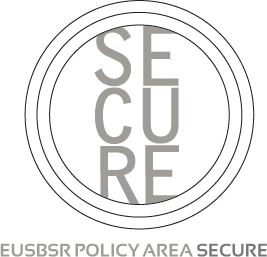In September 2018, the Council of the Baltic Sea States Task Force against Trafficking in Human beings (CBSS TF-THB) initiated the project Paving the Way for the Harmonized Operational Framework in the Baltic Sea Region (HOF-BSR). It has since been operating to achieve the ambitious goal of developing the Baltic Sea Region as a model region in the identification and provision of comprehensive and sustainable assistance to victims of human trafficking. Now as 2019 is nearing its end, so is the project and the main results of the project have all been launched: the Transnational Referral Mechanism of the Baltic Sea Region, the Human Trafficking Glossary and the Media and Trafficking in Human beings guidelines.
A necessary element of a Harmonized Operational Framework of human trafficking in the Baltic Sea Region is efficient inter-state cooperation, not least in the field of victim assistance. In cases of transnational trafficking, victims are often transferred from one assistance system in the country of destination to another system in the country of origin. If these systems do not complement each other and are able to provide a smooth transition, the individual is left without support and runs the risk of being re-trafficked. It was against this background that The Transnational Referral Mechanism of the Baltic Sea Region (TRM) was developed. To ensure that victims are granted adequate assistance and to avoid the risk of re-trafficking, structured and efficient cross-border cooperation in the Baltic Sea Region is necessary. The TRM, which is the first regional mechanism of its kind, aims to guide professionals working with victims of trafficking in human beings in the Baltic Sea region, as well as Bulgaria, Romania and Ukraine, in providing support and protection to victims across national borders. The TRM provides general information on national assistance systems in all 14 countries and includes procedures for the effective and safe transnational assistance and referral of victims to a range of services.
Another focus area of the project and a necessary tool for efficient inter-state cooperation is common terminology. When speaking about human trafficking, the terms used are often ambiguous and misconceptions are common. In an attempt to bridge these differences, the Human Trafficking Glossary was developed to help navigate through the complexities of human trafficking and to help stakeholders speak the same language about human trafficking. The Glossary is available in English, Estonian, Latvian, Lithuanian, Polish, Russian and Swedish.
The project also aimed to explore the connection between media and trafficking in human beings. In this regard, the CBSS TF-THB commissioned a study in Denmark, Estonia, Finland, Germany, Latvia, Lithuania, the Russian Federation and Sweden to examine how human trafficking is framed in mass media. The point of departure for the studies was that media plays an important role in forming and shaping public and, to some extent, political opinion on human trafficking and the studies were guided by the main question “How is human trafficking framed in mass media?”. The findings of these studies then contributed to the development of the guidelines Media and Trafficking in Human beings. The guidelines are based on a previous publication by the ICMPD and aim to provide media with the knowledge and tools needed to report on human trafficking cases in a sensitive and victim-friendly manner and have been translated into Estonian, Latvian, Lithuanian, Polish, Russian and Swedish.
The project is financed by the Government Offices of Sweden and the Swedish Institute.

